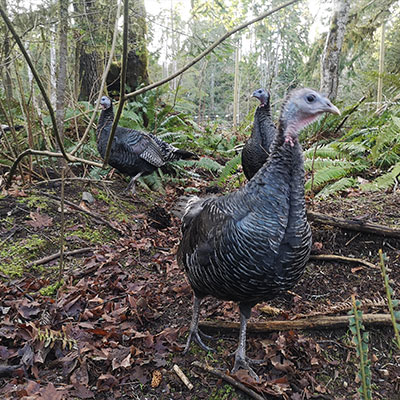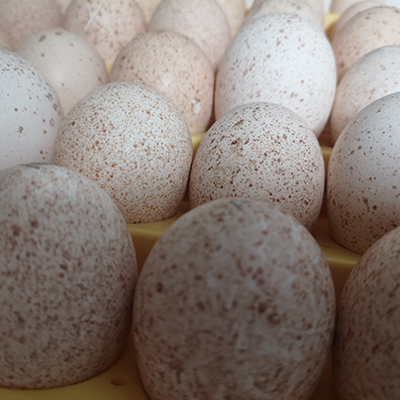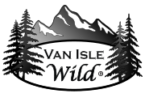Ridley Bronze Turkeys
Our birds have a new home!
Van Isle Wild no longer raises Ridley Bronze Turkeys
To order Poults & Hatching Eggs
Please visit www.theridleybronzeproject.com
– Preserving Canada's Only Heritage Turkey –
The Ridley Bronze Turkey
This page is dedicated to all of the information we have gathered on this amazing animal over the years, from personal experience, research, historical documentation, and sharing information with other seasoned breeders. If you have raised Ridleys, and have some information not seen here, we would love to hear from you. Contact Us.
So, What makes a the Ridley Bronze Turkey so Special?
The Basics:
Ridley Bronze turkeys are Canada’s only heritage turkey and they are classified as Critically Endangered. Rare Breeds Canada recorded only 90 breeding females left in the world in 2010. In 2012 there were 225 breeding females, and in 2015 just up slightly to 250. Van Isle Wild is one of the only Registered Breeders with Heritage Livestock Canada, and is dedicated to increasing their numbers and improving their lines.
The small farmers committed to improving these numbers had dropped from 50 to 30 across Canada as of 2015, but unfortunately it is only small farms that are keeping this breed alive. Part of the problem is that these turkeys are left to breed on their own naturally, unlike commercial birds that are incapable due to their large breast structure, and are mass produced through artificial insemination.
This particular breed of turkey is gentle, mild-mannered and great at foraging. The a very curious and can be surprisingly intelligent. They are beautiful to keep as pets, raise for food and/or a combination of the two! Their meat is considered a delicacy in the finest of restaurants with their rich, complex flavour and slightly more dark meat than a standard turkey.
Many people are unaware that heritage birds, unlike the supermarket turkeys, can run up to 25mph, fly up to 60mph and fly up to 35 feet into the treetops! They are very independent foragers and do not like to be contained in any sort of building. Ridley turkeys have a relatively long lifespan and take almost twice as long to raise than commercial birds as they grow at a slower rate. They are very hardy and intelligent. Many farmers will clip their wings, but with so many predators in the area such as mink that can destroy a flock within minutes, we leave them with their only real natural defense of flight. It is a good idea to have a protected pen for them at night, with lots of roost space as they don’t like roosting in the same place as the night before!
Read about some of the history of the Ridley Bronze Turkey Breed Here

Breed Identification for Ridley Bronze:
Live Weights:
Adult Male – 36lbs
Yearling Male – 33lbs
Hen – 20lbs
Pullet – 16lbs
Dressed Weights are typically 70% of live weights

Colour of male:
Head: Rich red, changeable to bluish-white.
Beak: Light horn at tip, dark at base.
Eyes: dark brown.
Throat wattle: Rich red, changeable to bluish-white
Beard: Black, rarely exceeds 2” even with age (unlike standard bronze).
Feathers:
Wings:
Stark white and pure black banding

Tail Feathers:
Stark white tips throughout. No cream, off-white or bronze feather tip on any feather. Dominate Tail feathers contain a static pattern and less stripes than standard bronze.

Body:
Female: Iridescent blue/green shimmer with white tips in laced pattern.
Male: Iridescent blue/green shimmer with defined muscular layering.
Very small chest beard – rarely exceeds 2” even with age (unlike standard bronze).

Ridley Bronze Turkey Gene Pool:
In the late 1970’s/early ‘80s, the University of SK obtained breeding stock from George Ridley for study. By 1981 the Ridley families had stopped turkey farming and so the Ridley Bronze turkey remained almost solely in the hands of the university as well as a handful of private breeders. The University of SK shut down breeding program in 2008 and their flock was dispersed to a number of private breeders across Canada. Many of these breeders did not maintain a breeding program or lost their birds for other reasons, with the result being that the Ridley bronze has all but disappeared. In 2010 it was determined that there were only about 90 breeding females remaining.
This small gene pool inevitably has been added to in open bloodlines, whether intentionally to increase fertility to or from neglect of breeding pure. We have found many breeders selling “Ridley Bronze” of all sizes, patterns and colours. Granted that ALL heritage turkeys are endangered, we feel it is important to try and preserve this breed as part of Canada’s History.
Our breeding stock has come directly from University of SK descendants with no outside bloodline introductions.
White Ridley Bronze and the Depletion Of The Breed:
Hatching any “all white” Ridley Bronze poults consistently is a result of crossbreeding. All bloodlines directly from the University of SK with no outside introductions from crossed birds do not have this trait.
It does appear that a recessive gene for all white feathers has been introduced along the way to some Ridley bloodlines. Read about Yeti in the Toronto star from 2011 here. Although, “Yeti” may have been Leucistic or Albino. Because it is a recessive gene both of the mother and the father must carry the trait in order to produce white offspring. We have found Canada-wide bloodlines, especially in British Columbia, producing birds with all white feathers, typically 1 or 2 in 12. These white birds, and unfortunately their parents are not “Ridley Bronze” breeding quality. It is almost impossible to breed out the white once introduced and can skip generations if the gene is only carried by one parent. This makes it virtually impossible to Identify in a bird without knowing the source of it’s genetics.
A female Turkey only needs to mate once in order to produce viable eggs for much of the season. So many breeders that have multiple breeds of turkey run the risk of crossing their birds, even if they are separated for most of the year. We are committed to raising only Ridley Bronze on our farm.
The genetics and significance of this breed is at risk with the propagation of the crossbreeds. If you are interested in conserving the Ridley Bronze, ask your breeder the following:
-Have you ever hatched White Poults?
-Do you keep and other kind of Turkeys?
-Where did you get your bloodlines from and how do you know they are Ridley descendant?
If they are a reputable breeder they will have no problem answering these questions.
If you already are a breeder, and take issue with this information we encourage you to contact us.
Please review our refund and returns policy before ordering eggs.
Ridley Bronze Poults and Hatching Eggs








